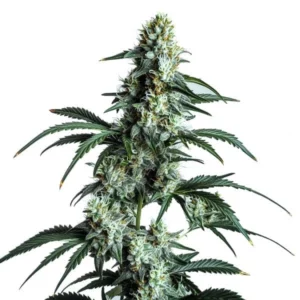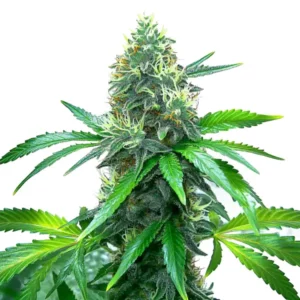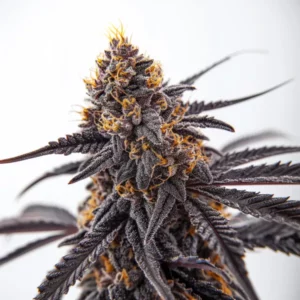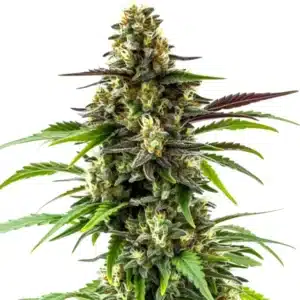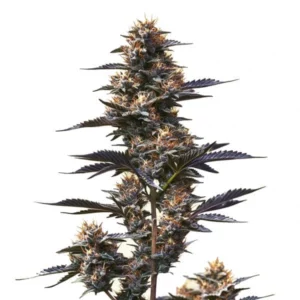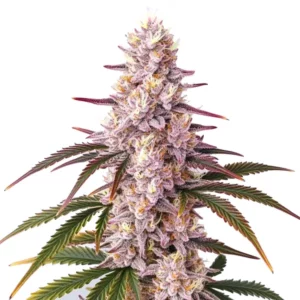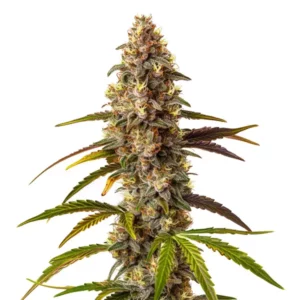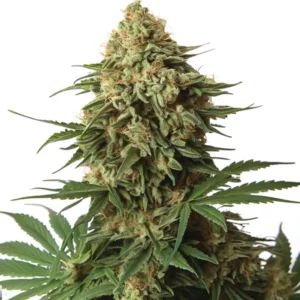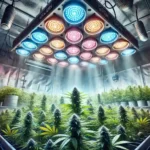
Cannabis Light Spectrum Myths Debunked
When it comes to growing cannabis, the light spectrum is often misunderstood. Many growers believe that only certain colors of light matter. This is not entirely true. While each color in the spectrum plays a role, a full range of light is beneficial. That’s why guides like Cannabis Light Spectrum Myths Debunked are important, as they help clarify misconceptions and show how balanced lighting improves growth and yields.
Some argue that blue light is only necessary during the vegetative phase. However, red light can be helpful too. It encourages stem growth and can boost overall plant health. Many myths circulate, but science shows us a more complex picture.
Recommended Strains
Sour Diesel
|
|
THC | 22% - 25% (Medium) |
|
|
Type | Feminized |
|
|
Yield | High |
|
|
Phenotype | 30% Indica / 70% Sativa |
OG Kush
|
|
THC | 20% - 24% (Medium) |
|
|
Type | Feminized |
|
|
Yield | Medium |
|
|
Phenotype | 55% Indica / 45% Sativa |
The idea that only red light is needed for flowering is another common myth. Although red light does promote flowering, a balanced spectrum will yield better results. Strains like OG Kush thrive with a mix of blue and red light. This combination enhances both growth and potency.
The Complexities of Light and Growth
Light spectrums can be confusing. The cannabis plant uses different parts of the spectrum for various growth stages. In the early stages, blue light is crucial. It helps with leaf development and keeps plants compact.
During flowering, both red and blue lights are beneficial. This spectrum mix can increase yields and improve quality. Strains like Gelato show significant enhancement with a balanced light approach.
Knowing cannabis light spectrum myths is essential for growers seeking optimal results. The truth behind cannabis lighting myths lies in recognizing that no single spectrum is a panacea. By tailoring the light to the plant’s growth stage, growers can achieve healthier and more productive crops.
Many growers fall into the trap of believing simplified versions of light spectrum usage. However, debunking myths about cannabis light spectrums reveals that a nuanced approach is necessary. Different light combinations during various growth phases can significantly impact plant development.
Promos & Deals
Breaking Down Common Myths
A prevalent myth is that more light always means more growth. This isn’t always true. Plants can suffer from light burn if exposed to too much light. This is why understanding the right intensity and spectrum is crucial.
Another myth states that UV light is not necessary. While not essential, UV light can enhance resin production. This is particularly useful for strains like Sour Diesel, which benefits from increased trichome production.
Cannabis light spectrum misconceptions clarified through scientific research show that balance is key. Overreliance on a single light spectrum can lead to suboptimal growth and production. By exploring the complexities of light and growth, growers can develop more effective cultivation strategies.
Debunking myths about cannabis light spectrums involves understanding the plant’s diverse needs. Light isn’t just about quantity; it’s about providing the right quality and intensity at the right time. This comprehensive knowing helps in exposing cannabis light spectrum falsehoods.
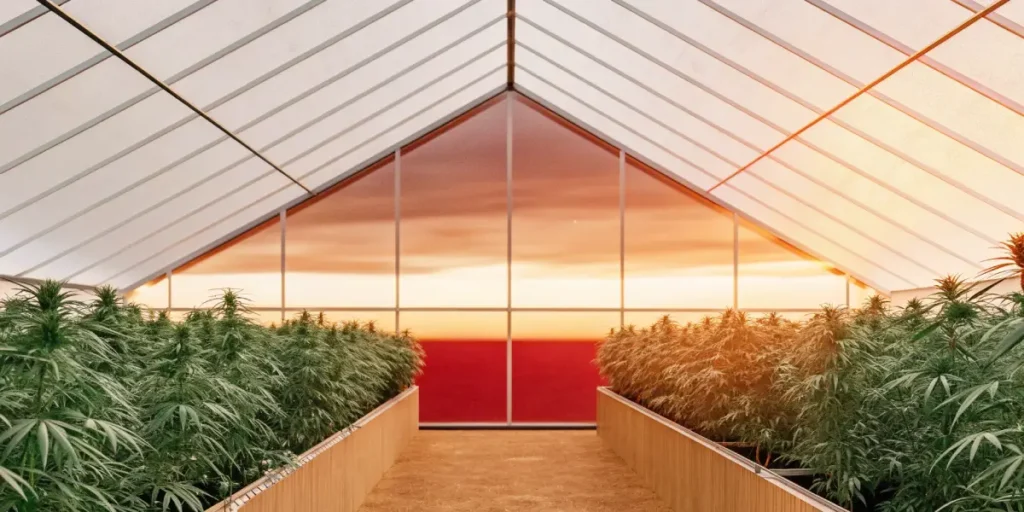
Real-World Applications of Light Spectrums
In a practical setting, using LED lights with adjustable spectrums can provide flexibility. This allows growers to mimic natural sunlight throughout the plant’s life cycle. Adjusting the spectrum can lead to healthier plants.
Growers often find that a balanced spectrum leads to more vibrant plants. A mix of blue, red, and even some green light can produce robust crops. The truth behind cannabis lighting myths is that balance often trumps intensity.
Cannabis light spectrum misconceptions clarified in real-world scenarios emphasize the importance of adaptability. Growers who experiment with variable spectrums often discover unique combinations that work best for their specific strains. This adaptability is crucial in achieving optimal growth.
The truth behind cannabis lighting myths is reinforced when growers see tangible results from their experimentation. By knowing and applying the principles of light spectrums, they can enhance plant health and productivity, ultimately debunking longstanding myths.
Understanding the Needs of Different Strains
Different strains have varying light requirements. Indicas might prefer a slightly different spectrum than sativas. Tailoring the light spectrum can optimize growth for specific genetics.
Experienced growers often adjust their light setup based on the strain. For example, OG Kush might need more red light during flowering compared to a sativa-dominant strain. Debunking myths about cannabis light spectrums can lead to better growth strategies.
Knowing cannabis light spectrum myths requires recognizing the diversity among strains. Each strain’s unique genetic makeup means it will respond differently to various light spectrums. This knowledge is crucial for growers aiming to maximize yield and quality.
As cannabis light spectrum falsehoods are exposed, growers become more adept at customizing their lighting setups. This personalization not only enhances growth but also contributes to a deeper understanding of each plant’s requirements during its life cycle.
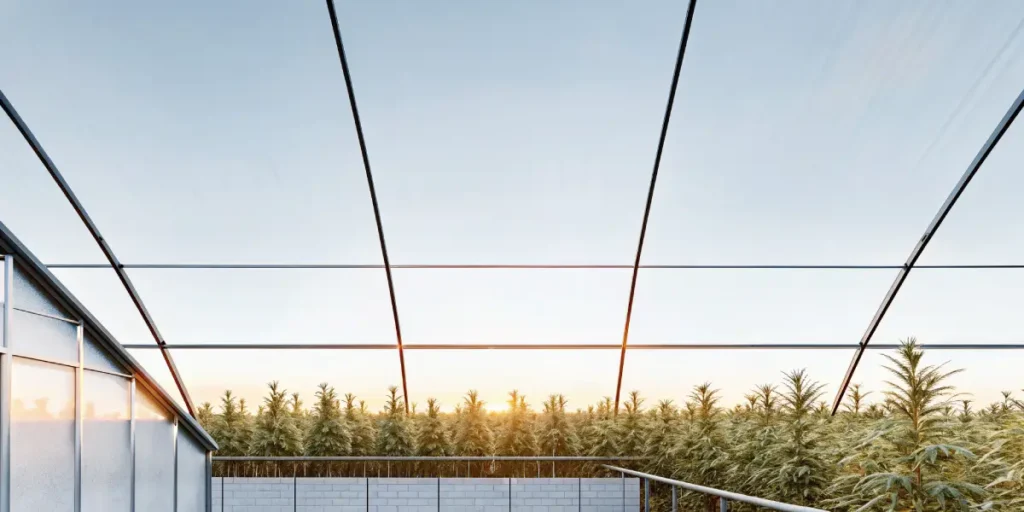
FAQs about Cannabis Light Spectrum Myths Debunked
How does light spectrum affect cannabis growth?
The light spectrum affects various growth stages of cannabis. Blue light is vital in vegetative growth for leaf development. It keeps plants compact and healthy. During flowering, red light is essential for bud production, but a balanced spectrum including both blue and red light can enhance overall growth and potency.
Some growers mistakenly believe only one part of the spectrum is needed. However, using a full spectrum of light can lead to better growth. This approach provides the plant with a more natural environment, similar to sunlight. This leads to healthier, more productive plants.
Cannabis light spectrum misconceptions clarified through research show the significance of a balanced approach. While each part of the spectrum has its role, the interplay between different wavelengths is what truly enhances plant development. This comprehensive understanding is vital for successful cultivation.
Debunking myths about cannabis light spectrums involves moving beyond basic assumptions. By exploring how different light spectrums contribute to plant health, growers can make informed decisions that support robust growth and high yields.
Can too much light harm cannabis plants?
Yes, too much light can harm cannabis plants. Overexposure can lead to light burn, which damages leaves and disrupts growth. It’s critical to balance light intensity with the plant’s needs, especially in controlled environments.
Adjusting light levels and spectrum based on the growth stage can prevent damage. Monitoring plant responses helps in fine-tuning the light setup. This ensures that plants receive optimal light without the risk of light burn.
The truth behind cannabis lighting myths includes understanding that more is not always better. Excessive light, without consideration of the plant’s specific needs, can lead to detrimental effects. By managing light exposure carefully, growers can avoid common pitfalls associated with overlighting.
Through the process of debunking myths about cannabis light spectrums, growers learn the importance of moderation. Tailoring the light environment to match the plant’s developmental stage is critical to preventing harm and promoting vigorous growth.
Is UV light necessary for cannabis growth?
UV light is not necessary but can be beneficial. It can boost resin production and enhance trichome development. This is particularly useful for strains seeking increased potency and flavor.
While UV light isn’t a requirement, incorporating it can lead to higher quality buds. Growers aiming for top-shelf quality often experiment with UV light to improve their final product.
Cannabis light spectrum misconceptions clarified by experienced growers show that while UV light isn’t essential, it can offer significant advantages. The introduction of UV light can stimulate certain chemical processes, enhancing the plant’s final quality.
Debunking myths about cannabis light spectrums involves understanding the optional benefits of UV light. While not mandatory, its strategic use can elevate the plant’s potency and flavor profile, offering a competitive edge for cultivators targeting premium markets.
Do all cannabis strains need the same light spectrum?
No, different strains have different light spectrum needs. Indica and sativa strains, for example, may have varying preferences. Tailoring the light spectrum to suit specific strain genetics can optimize growth.
Experienced growers adjust their light setups based on the strain. Observing plant responses can help in refining the light spectrum for better results. This personalized approach debunks myths about one-size-fits-all lighting.
Knowing cannabis light spectrum myths requires acknowledging the diversity among cannabis strains. Each strain’s unique characteristics mean they respond differently to light, necessitating a tailored approach for optimal results.
As cannabis light spectrum falsehoods are exposed, growers can refine their techniques to better suit the specific needs of each strain. This customization leads to improved growth outcomes and a deeper understanding of the plant’s requirements.
What are the benefits of using LED lights for cannabis growing?
LED lights offer adjustable spectrums, making them versatile for cannabis growth. They provide the ability to mimic natural sunlight, adapting to different growth stages effectively. This flexibility enhances plant health and productivity.
LEDs are energy-efficient and produce less heat, reducing the risk of light burn. They allow growers to fine-tune the light spectrum, leading to optimal growth conditions. This makes them a popular choice among both novice and experienced growers.
The truth behind cannabis lighting myths is often revealed through the use of LED technology. These lights offer precision and control, allowing growers to experiment with different spectrums and intensities to find the perfect balance for their plants.
Debunking myths about cannabis light spectrums with LED lights shows how technological advancements can lead to better cultivation practices. Their efficiency and adaptability make them an indispensable tool in modern cannabis growing.


